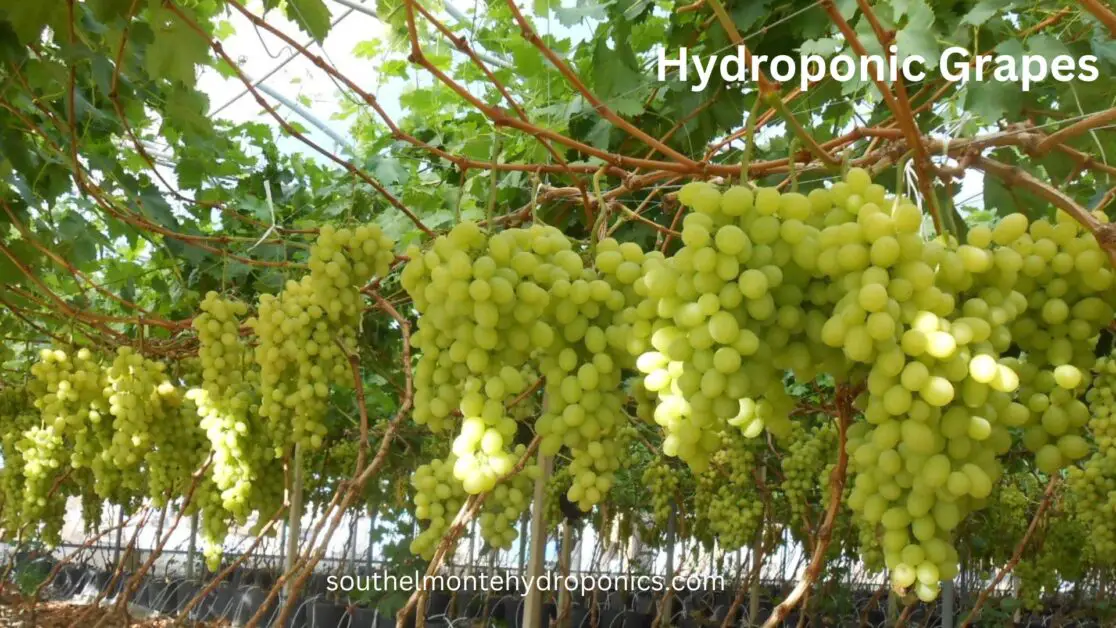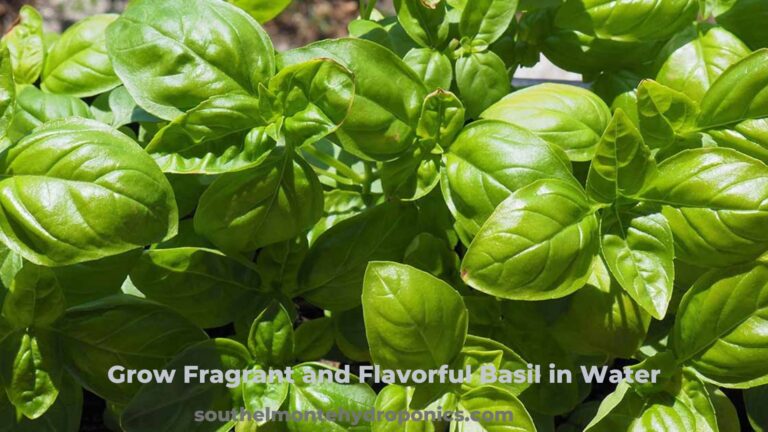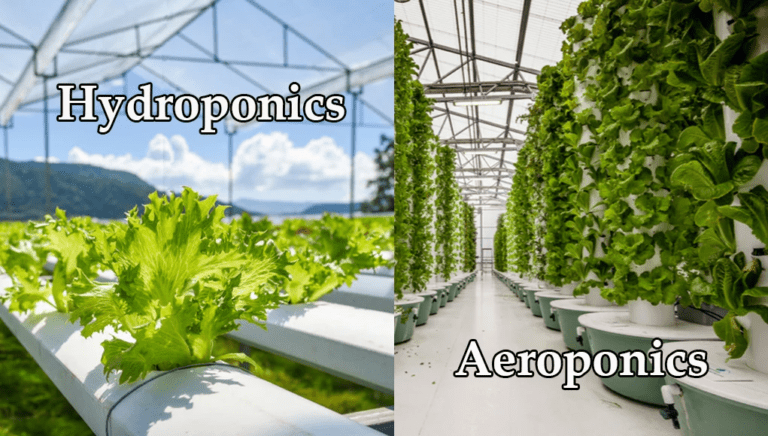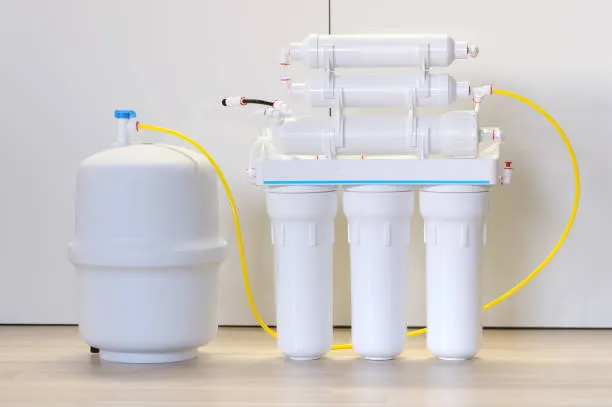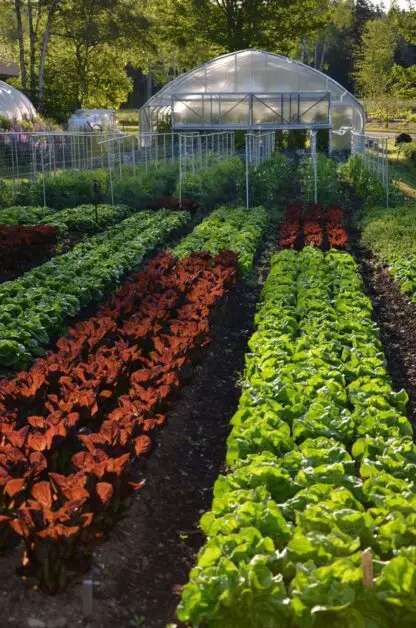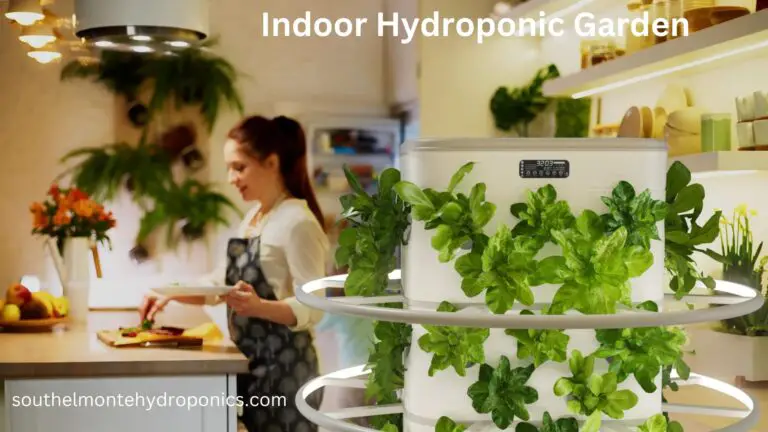Hydroponic Grapes: The best and no #1 way how to Grow Sweet and Juicy Grapes in Water
The Benefits of Cultivation for Hydroponic Grapes
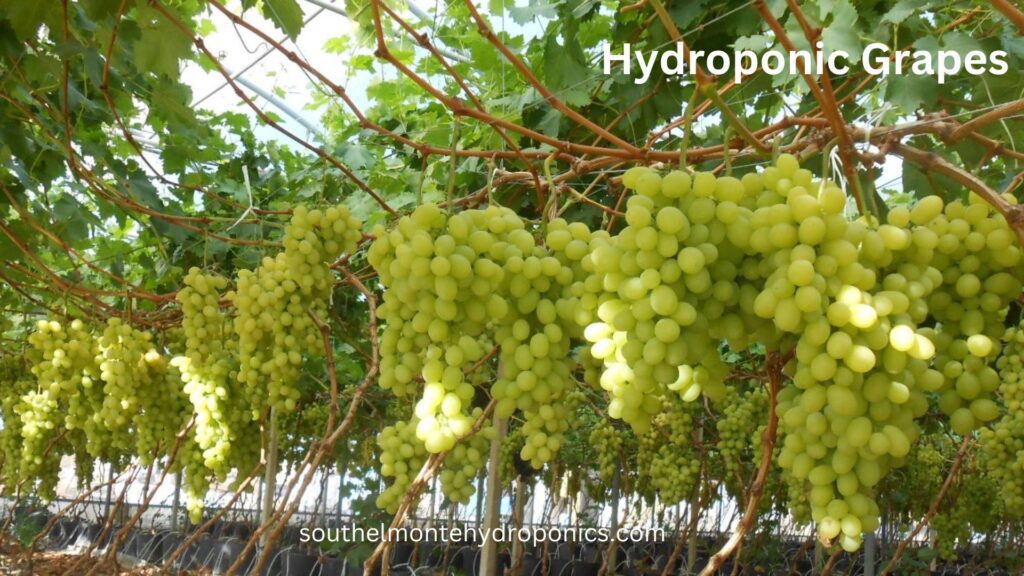
Hydroponic Grapes are cultivation offers numerous benefits for grape production, making it an increasingly popular method among farming enthusiasts. One of the key advantages of hydroponics Grapes is the ability to control and optimize nutrient delivery to the plants. By providing a precise balance of essential elements directly to the root system, hydroponic grapes receive optimal nutrition, resulting in healthier and more vigorous growth. This, in turn, leads to higher yields and better overall quality of the grapes.
Another benefit of hydroponic cultivation for grapes is the efficient use of water and space. Unlike traditional soil-based farming, hydroponics allows for the conservation of water resources as it requires significantly less water to irrigate the plants. Additionally, hydroponic systems can be designed and arranged vertically, maximizing the use of limited space. This is particularly advantageous for urban or indoor gardens where space is limited, enabling grape cultivation in areas that would otherwise be unsuitable or impractical.
Furthermore, Hydroponic Grapes cultivation also provides better disease and pest management for grape vines. Growing grapes in a soilless medium helps to minimize the risk of soil-borne diseases and pests, reducing the need for chemical interventions. By maintaining a clean and controlled environment, hydroponic Grapes systems create a less favorable habitat for pests and pathogens, thus decreasing the likelihood of infestations and improving overall crop health.
When it comes to grape cultivation, the benefits of hydroponics Grapes are clear. By optimizing nutrient delivery, conserving water, maximizing space utilization, and enhancing disease and pest management, hydroponic systems offer a promising solution for grape growers looking to achieve higher yields, better quality, and more sustainable farming practices.
Understanding the Basics of Hydroponics for Grape
Production
Hydroponic cultivation is an innovative method that is rapidly gaining popularity among grape producers. By understanding the basics of hydroponics for grape production, growers can harness its benefits for improved crop yields and quality. In hydroponics, the traditional soil-based approach is replaced with a nutrient-rich water solution directly feeding the plant’s roots, allowing for precise control of essential elements and optimizing their uptake.
One of the key advantages of hydroponic grape production is the ability to overcome limitations posed by soil conditions. By eliminating the need for soil, growers can establish their grape plants in any location, even in areas with poor soil quality or limited access to arable land. This offers tremendous flexibility and potential for expansion, making hydroponics an attractive option for both commercial vineyards and hobbyists. Additionally, plants grown hydroponically tend to have fewer issues with pests, diseases, and weed competition, reducing the need for chemical treatments and promoting more sustainable agricultural practices.
Selecting the Right Grape Varieties for Grapes Grapes Cultivation
When it comes to selecting the right grape varieties for hydroponic cultivation, there are several key factors to consider. One of the most important considerations is the suitability of the grape variety for the hydroponic system. Some grape varieties are better suited to hydroponics than others due to their growth habits, adaptability to controlled environments, and resistance to diseases and pests.
Another factor to consider is the flavor profile of the grape variety. Different grape varieties have distinct flavors, ranging from sweet and fruity to acidic and tart. Understanding the flavor characteristics of each grape variety can help you select the ones that align with your preferences or market demand. Additionally, factors such as grape color, size, and texture should also be taken into account to meet consumer expectations. It is recommended to experiment with different grape varieties to find the ones that thrive in your hydroponic system and produce the desired flavor and quality.
Preparing the Hydroponic System for Growing Grapes
Preparing the Hydroponic System for Growing Grapes
Before diving into the exciting world of hydroponic grape cultivation, it is essential to properly prepare your hydroponic system. By investing time and effort into this crucial step, you create a solid foundation for successful grape production.
First and foremost, selecting the appropriate hydroponic Grapes system is key. Consider the size of your operation, available space, and budget to determine whether a vertical, NFT (Nutrient Film Technique), or DWC (Deep Water Culture) system suits your needs best. Each system offers its own unique advantages in terms of water efficiency, nutrient delivery, and ease of maintenance. Take the time to research and consult with experienced growers to make an informed decision.
Next, ensure that your hydroponic system is clean and sanitized before introducing grape plants. Thoroughly clean all components, including containers, channels, pumps, and pipes, to eliminate any potential disease or pest risks. Maintaining a sterile environment is essential to prevent the spread of harmful microorganisms and to provide optimal growing conditions for your grapes. Additionally, regularly monitor and adjust the pH level of your nutrient solution to provide an ideal pH range of 5.5-6.5, as grape plants thrive in slightly acidic conditions.
By following these initial steps and investing in the right hydroponic system, you set the stage for a prosperous grape-growing venture. Stay tuned for the next installment, where we will delve deeper into the selection of grape varieties best suited for hydroponic cultivation.
Nutrient Solutions: Providing Essential Elements for Grape Growth
Nutrient solutions play a crucial role in providing essential elements for the optimal growth of grapes in hydroponic Grapes systems. These solutions are tailored to meet the specific nutritional needs of grape plants, ensuring they receive all the necessary nutrients for healthy development and high-quality fruit production.
One of the key elements that grape plants require for robust growth is nitrogen. Nitrogen is essential for the formation of amino acids, proteins, and chlorophyll, all of which contribute to healthy foliage and overall plant vigor. Phosphorus is another critical element that plays a vital role in energy transfer, root development, and fruit ripening. Potassium, on the other hand, aids in water regulation, disease resistance, and improved fruit quality.
In addition to these major elements, grape plants also benefit from a range of micronutrients, such as iron, magnesium, calcium, and zinc. These micronutrients are necessary for various metabolic processes, enzyme activation, and overall plant health. By providing a well-balanced nutrient solution that supplies all these essential elements, hydroponic Grapes growers can ensure optimal growth and maximize the yield and quality of grapes.
Creating an Ideal Growing Environment for Hydroponic Grapes
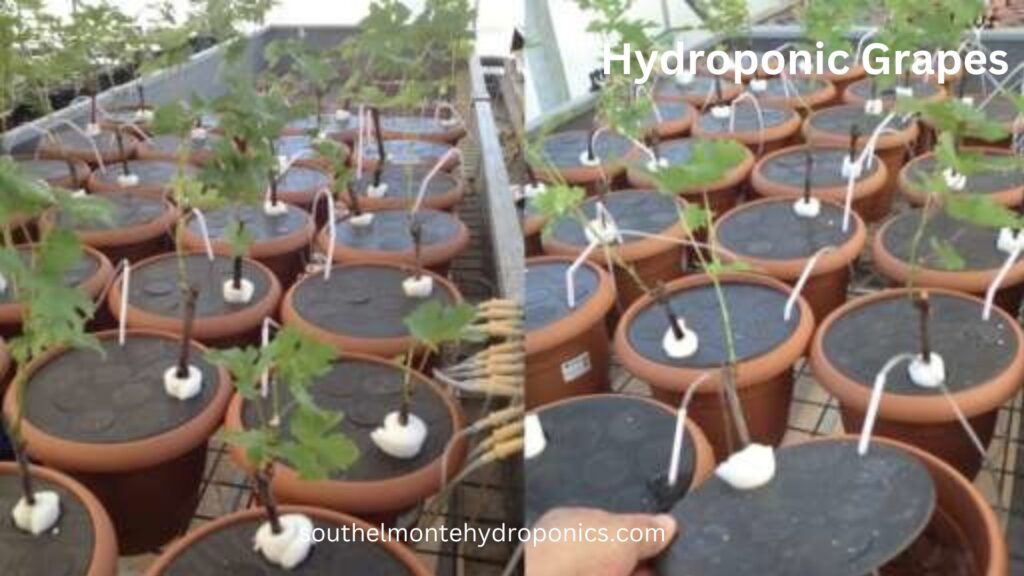
Creating an ideal growing environment is crucial for successful hydroponic Grapes cultivation. By providing the right conditions, you can maximize grape yields and ensure optimal quality. One key factor in creating an ideal growing environment is maintaining the right temperature. Grapes thrive in temperatures between 60 to 70°F (15 to 21°C) during the day and slightly cooler temperatures of 50 to 60°F (10 to 15°C) at night. Consistency is also vital, as temperature fluctuations can negatively impact grape development. Controlling the temperature within these ranges can be achieved using a combination of ventilation, heating, and cooling systems, depending on the specific climate conditions.
In addition to temperature, lighting is another critical aspect of creating an ideal growing environment for hydroponic grapes. Grapes require a minimum of six hours of direct sunlight or artificial light equivalent per day. High-intensity discharge (HID) lamps, such as metal halide or high-pressure sodium, are commonly used to provide the necessary light intensity for grape growth. It is important to position the lights at an appropriate distance from the plants to avoid overheating or burning the foliage. Regular monitoring and adjustment of lighting levels ensure that grapes receive the right amount of light throughout their growth cycle. By prioritizing temperature control and lighting conditions, you can establish an ideal growing environment that promotes the healthy development of hydroponic grapes.
Planting Techniques for Hydroponic Grapes Production
When it comes to planting techniques for hydroponic grape production, there are a few important factors to consider. First and foremost is selecting the right vine and rootstock for your hydroponic system. Certain grape varieties are better suited for hydroponic cultivation due to their adaptability to soilless environments and specific growing conditions. It is essential to choose grape varieties that have a compact growth habit and are resistant to common diseases and pests.
Once you have selected the appropriate grape varieties, the next step is to prepare the hydroponic system for planting. This involves ensuring that the nutrient solution is properly balanced and that the pH levels are within the recommended range for grape cultivation. It is also important to properly space the vines within the hydroponic system to allow for adequate air circulation and light penetration. This will help promote healthy growth and reduce the risk of diseases and mold. By following these planting techniques, you can set the stage for successful hydroponic grape production and maximize your yields.
Managing Water Quality and pH Levels in Hydroponic Grapes Cultivation
Water quality and pH levels play a crucial role in the successful cultivation of grapes in a hydroponic system. The quality of the water used for irrigation should be closely monitored to ensure it meets the specific requirements of grape plants. This includes factors such as pH, nutrient content, and mineral composition.
Maintaining an appropriate pH level is particularly important in hydroponic grape cultivation. Grapes thrive in slightly acidic conditions, with a pH range of 5.5 to 6.5 being considered optimal. A pH level outside of this range can impede nutrient uptake and lead to nutrient deficiencies or toxicities. To regulate pH, growers typically adjust the water using pH stabilizers, such as pH buffers or acidifying agents, to maintain the ideal range for grape plants.
Furthermore, water quality should also be assessed for potential contaminants, such as heavy metals, chlorine, or pathogens, which can negatively impact plant health. Conducting regular water tests and using appropriate water treatment methods, such as filtration or sterilization, can help ensure a clean and safe water supply for the hydroponic grape system.
In the next section, we will explore the important aspect of pruning and training methods for achieving optimal grape yield and quality in a hydroponic system.
Pruning and Training Methods for Optimal Grape Yield and Quality
Grapes are a highly valuable crop in hydroponic Grapes cultivation, and proper pruning and training methods are essential for maximizing yield and quality. Pruning involves the removal of excess shoots, leaves, and canes, thereby improving air circulation and sunlight penetration to the grape clusters. This process helps to prevent diseases and promote healthier fruit development. Additionally, pruning allows for better management of vine vigor and canopy density, ensuring optimal grape production.
Training, on the other hand, involves the manipulation and positioning of grapevines to establish a balanced framework that supports healthy growth and efficient fruit development. Common training methods for hydroponic Grapes systems include the Vertical Shoot Positioning (VSP) and the Geneva Double Curtain (GDC) systems. The VSP system involves training the grape canes vertically, thereby maximizing exposure to sunlight and facilitating proper airflow through the canopy. This method is particularly beneficial for cultivars that require increased sunlight exposure to achieve optimal ripeness and flavor. The GDC system, on the other hand, utilizes a trellis system with horizontal wires to support the grapevines. This method allows for better light distribution and provides ease of access for maintenance and harvesting operations.
By implementing appropriate pruning and training methods, hydroponic Grapes growers can achieve higher yields, superior fruit quality, and ultimately enhance their profitability. However, it is important for growers to consider the specific requirements of each grape cultivar and adapt their pruning and training strategies accordingly. Additionally, regular monitoring and adjustments to the vines’ growth patterns are necessary to ensure that the plants are well-maintained and produce the desired results. So it is vital for growers to stay informed about the latest research and industry practices to continually improve their grape cultivation techniques.
Disease and Pest Management in Hydroponic Grapes Systems
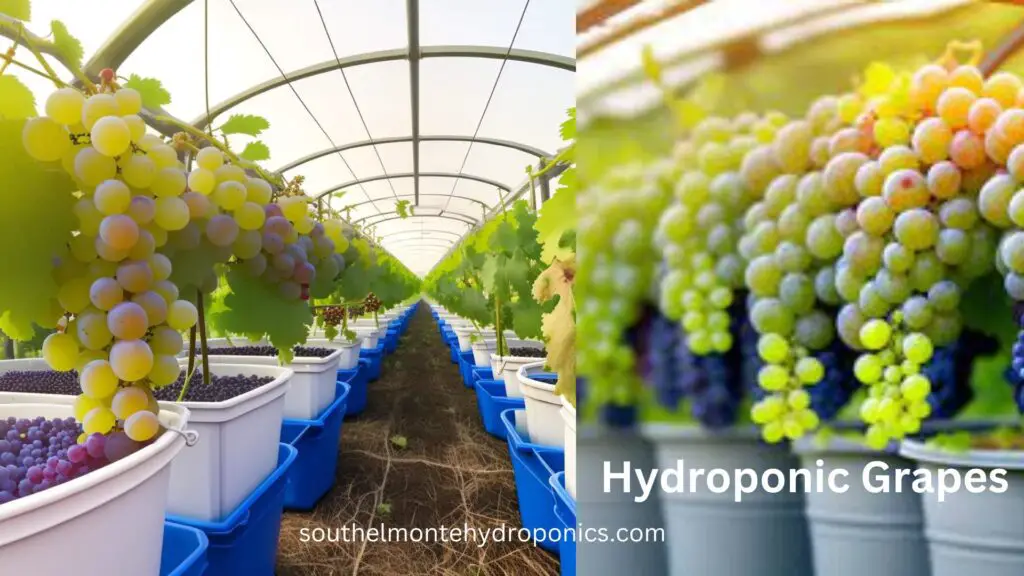
Disease and pest management is a crucial aspect of maintaining healthy hydroponic grape systems. Just like traditional grape cultivation, hydroponic grape production can also be susceptible to various diseases and pests. However, the controlled environment of hydroponics can help mitigate these risks to a great extent.
Preventing diseases is always better than trying to cure them. One of the best practices in disease management is to ensure strict hygiene in the hydroponic system. This includes regularly cleaning and disinfecting the tanks, pipes, and growing medium. It is also important to keep the nutrient solution properly balanced and monitor its pH levels regularly. Additionally, maintaining the appropriate temperature and humidity levels in the growing environment can discourage the development of certain diseases.
Despite taking all preventive measures, it is still possible for diseases to occur in hydroponic grape systems. In such cases, it is important to identify the disease early and take prompt action to minimize its impact. The use of organic fungicides and bactericides can be effective in controlling diseases, but it is crucial to use products that are specifically labeled for hydroponic use. Regular monitoring and scouting for pests is also essential in hydroponic grape systems. Integrated pest management techniques, such as introducing beneficial insects or using biological controls, can help keep pest populations in check without the need for harsh chemicals.
Harvesting and Storing Hydroponically Grown Grapes
Harvesting and storing hydroponically grown grapes is an important stage in the cultivation process that requires careful attention to ensure optimal flavor and longevity. When it comes to harvesting, timing is crucial. Grapes should be harvested when they have reached their optimal sugar content, acidity, and flavor profile. This can typically be determined by regular testing of the grapes’ Brix levels, pH levels, and taste. As each grape variety has its own specific requirements, it is essential to consult the grape variety’s specific guidelines for harvesting.
Once the grapes have reached their peak ripeness, they should be gently hand-picked or carefully cut from the vine, taking care not to damage the delicate clusters. It is recommended to use sanitized containers or trays lined with clean, food-grade materials to collect the harvested grapes. This ensures that any potential contaminants are minimized, helping to preserve the grapes’ quality.
Following harvest, proper storage conditions are essential to maintain the freshness and flavor of hydroponically grown grapes. The ideal storage temperature for most grape varieties ranges from 30 to 32 degrees Fahrenheit (-1 to 0 degrees Celsius). Humidity levels should be maintained at around 90-95% to prevent dehydration and maintain grape quality. Packaging the grapes in perforated plastic bags or placing them in moisture-resistant containers can help preserve their moisture balance and prevent mold growth.
It is important to note that grape storage varies depending on the desired purpose. Grapes intended for immediate consumption should be stored at slightly higher temperatures, around 35 to 38 degrees Fahrenheit (2 to 3 degrees Celsius), to maintain their juiciness and eating quality. On the other hand, if the grapes are intended for winemaking, a cooler storage environment can help to preserve their acidity and ensure the grapes’ integrity.
Properly harvesting and storing hydroponically grown grapes is vital to maintain their quality and extend their shelf life. By following the recommended guidelines for harvesting at optimal ripeness and providing ideal storage conditions, gardeners can enjoy the fruits of their labor and savor the delicious flavors of hydroponically grown grapes.
Creating a hydroponic system for grape cultivation involves careful planning and consideration of various factors such as nutrient solutions, pH levels, temperature, and support structures. Below is a basic table outlining key aspects of Hydroponic Grapes cultivation:
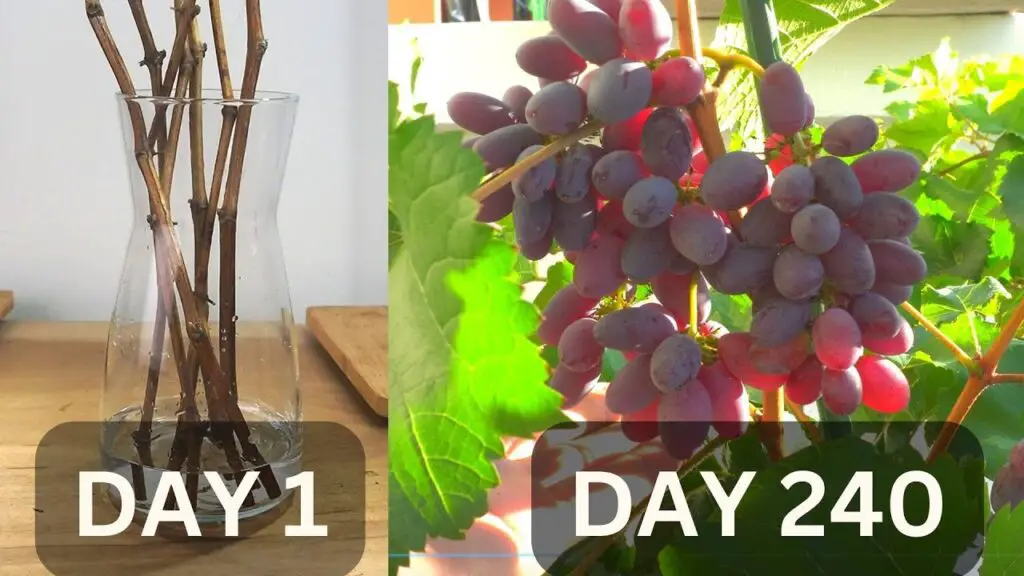
| Aspect | Details |
|---|---|
| Grape Variety | Choose a grape variety suitable for hydroponic cultivation. Popular varieties include Thompson Seedless, Flame Seedless, and Crimson Seedless. |
| Hydroponic System | Select a hydroponic system suitable for grapevines, such as Nutrient Film Technique (NFT), Deep Water Culture (DWC), or Drip System. |
| Growing Medium | Consider using an inert growing medium like perlite, coconut coir, or rock wool to support the grapevines and allow for proper nutrient absorption. |
| Nutrient Solution | Use a balanced hydroponic nutrient solution formulated for fruiting plants. Adjust nutrient levels based on the grapevine’s growth stage (vegetative, flowering, fruiting). |
| pH Levels | Maintain pH levels between 5.5 and 6.5 for optimal nutrient absorption. Regularly monitor and adjust pH as needed to prevent nutrient deficiencies or toxicities. |
| Temperature | Maintain a consistent temperature between 20-25°C (68-77°F) during the day and slightly cooler at night. Grapes are sensitive to temperature fluctuations. |
| Lighting | Provide adequate lighting using high-intensity discharge (HID) lamps or light-emitting diodes (LEDs) to ensure proper photosynthesis, especially in indoor setups. |
| Training and Support | Implement a support system like trellises or vertical lines to train the grapevines for optimal growth and fruit development. Regular pruning may be necessary. |
| Pollination | Depending on the grape variety, hand pollination may be required. Gently shake the vines during the flowering stage to encourage pollen transfer and fruit set. |
| Harvesting | Harvest grapes when they reach the desired maturity level. Grapes can be harvested multiple times during the growing season. |
| Pest and Disease Control | Monitor the hydroponic system for pests and diseases. Implement preventive measures and use appropriate treatments if issues arise. |
It’s essential to note that grape cultivation, whether traditional or hydroponic, requires careful attention to detail and consistent management. Adjustments may be needed based on the specific conditions of your hydroponic setup and the grape varieties chosen.
A Details Video for Hydroponic Grapes:
Tips for Enhancing Grape Flavor and Juiciness in Hydroponic Grapes Systems
To enhance the flavor and juiciness of grapes grown in hydroponic systems, there are several tips that gardeners can follow. First and foremost, selecting the right grape varieties is essential. Look for varieties known for their exceptional flavor and juiciness, such as the Crimson Seedless or the Thompson Seedless. These varieties have been extensively tested and proven to thrive in hydroponic environments, resulting in delicious and succulent grapes.
Another important factor in enhancing grape flavor and juiciness is providing the appropriate nutrient solutions. Hydroponic grapes require a balanced and tailored approach to nutrient delivery. Ensuring that the nutrient solution contains the right blend of essential elements, including nitrogen, phosphorus, potassium, and various micronutrients, is crucial. Regular monitoring of nutrient levels and pH is also recommended to maintain optimum conditions for grape growth and flavor development.
Additionally, creating an ideal growing environment plays a significant role in the quality of hydroponic grapes. Controlling temperature and humidity levels, as well as providing adequate ventilation and air circulation, can contribute to higher sugar content and juicier grapes. Additionally, proper lighting, such as using full-spectrum LED grow lights, can promote better flavor development in grapes.
Stay tuned for more tips on how to enhance grape flavor and juiciness in hydroponic systems.
Success Stories: Real-Life Examples of Hydroponic Grapes Growers
A hydroponic grape cultivation success story comes from the Brook Farm Vineyards in California. Owned by Mark and Lisa Anderson, this vineyard has successfully implemented hydroponic techniques to grow high-quality grapes. By utilizing a carefully designed hydroponic system, the Andersons have overcome the challenges of limited soil availability and water scarcity in their region.
This innovative approach has not only resulted in healthy and vigorous grapevines but has also improved the overall quality and flavor of the grapes. The controlled environment provided by hydroponics allows the Andersons to monitor and adjust essential factors such as nutrient levels, pH balance, and water quality, ensuring optimal growing conditions for their grapes. The result is a consistent and premium yield that surpasses traditional soil-based cultivation methods. The Andersons’ success story serves as a testament to the potential of hydroponics in grape production and has inspired other growers to explore this progressive approach to viticulture.
What are the advantages of cultivation for Hydroponic Grapes?
Hydroponic cultivation for grapes offers several benefits, including enhanced control over nutrient intake, optimized water usage, increased yield, reduced risk of soil-borne diseases, and the ability to grow grapes in non-traditional environments.
How does Hydroponic Grapes work for production?
Hydroponics is a method of growing plants without soil, using a nutrient-rich water solution instead. In hydroponic grape production, the plants’ roots are suspended in the solution, which provides them with the necessary nutrients and hydration.
What varieties are suitable for Hydroponic Grapes cultivation?
While hydroponic cultivation is possible for various grape varieties, some popular choices include seedless varieties such as Thompson Seedless, Flame Seedless, and Crimson Seedless. These varieties are known for their vigorous growth and adaptability to hydroponic systems.
How do I prepare a system for growing Hydroponic Grapes?
To prepare a hydroponic system for growing grapes, you need to set up a reservoir for the nutrient solution, install a drip irrigation system or a nutrient film technique (NFT) system, and ensure proper aeration and lighting for the plants.
How do I provide essential nutrients to Hydroponic Grapes plants?
Nutrient solutions are used to provide essential elements for grape growth in hydroponics. These solutions are tailored to meet the specific nutrient requirements of the plants, and they typically contain a mixture of macronutrients (e.g., nitrogen, phosphorus, potassium) and micronutrients (e.g., iron, zinc, manganese) in the correct ratios.
What conditions are needed to create an ideal growing environment for hydroponic grapes?
An ideal growing environment for hydroponic grapes includes maintaining optimal temperature and humidity levels, providing sufficient artificial lighting, ensuring proper ventilation, and controlling factors like CO2 levels and air circulation.
How should I plant vines in a Hydroponic Grapes system?
Grape vines in a hydroponic system can be planted using techniques such as the Dutch bucket system, vertical trellis systems, or vertical towers. These methods allow the vines to grow vertically and maximize space utilization.
How can I manage water quality and pH levels in hydroponic grape cultivation?
Monitoring water quality and pH levels is crucial in hydroponic grape cultivation. Regular testing of the nutrient solution’s pH and adjusting it to the optimal range (usually between 5.5 and 6.5) is essential to ensure proper nutrient uptake and plant growth. Additionally, using filtered or purified water can help maintain water quality.
What pruning and training methods are recommended for hydroponic grape systems?
Pruning and training methods in hydroponic grape systems include techniques like spur pruning, cane pruning, and training the vines along a trellis or wire system. These methods help manage vine growth, maximize fruit production, and improve air circulation within the canopy.
How can I manage diseases and pests in hydroponic grape systems?
Disease and pest management in hydroponic grape systems involve implementing preventive measures such as maintaining a clean growing environment, regularly inspecting plants for signs of diseases or pests, and using appropriate organic or chemical treatments if necessary.
What is the process for harvesting and storing hydroponically grown grapes?
Harvesting hydroponically grown grapes involves picking the mature clusters when they reach the desired ripeness, carefully cutting them from the vines, and handling them gently to avoid damage. Afterward, grapes can be stored in a cool, dark place or refrigerated to maintain freshness.
Are there any tips to enhance the flavor and juiciness of hydroponic grapes?
Yes, some tips to enhance the flavor and juiciness of hydroponic grapes include providing optimal nutrient solutions, ensuring proper sunlight exposure, controlling temperature and humidity levels, and harvesting at the peak of ripeness. Experimenting with different grape varieties and post-harvest handling techniques can also contribute to flavor enhancement.

